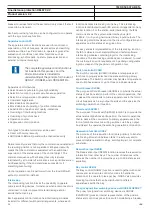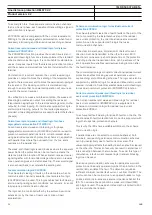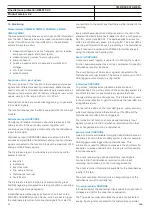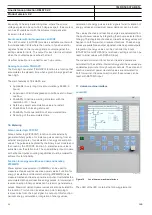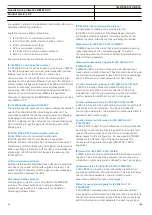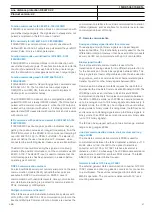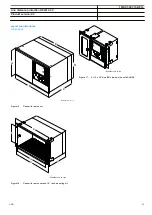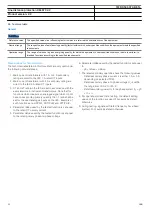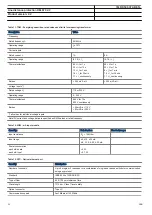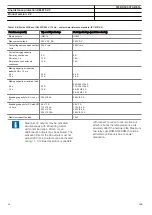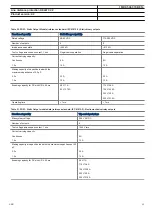
• Graphical display capable of showing a user defined single
line diagram and provide an interface for controlling
switchgear.
• Navigation buttons and five user defined command buttons
to shortcuts in the HMI tree or simple commands.
• 15 user defined three-color LEDs.
• Communication port for PCM600.
The LHMI is used for setting, monitoring and controlling.
18. Basic IED functions
Time synchronization
The time synchronization function is used to select a common
source of absolute time for the synchronization of the IED when
it is a part of a protection system. This makes it possible to
compare events and disturbance data between all IEDs within a
station automation system and in between sub-stations. A
common source shall be used for IED and merging unit when
IEC/UCA 61850-9-2LE process bus communication is used.
Precision time protocol PTP
PTP according to IEEE 1588-2008 and specifically its profile
IEC/IEEE 61850-9-3 for power utility automation is a
synchronization method that can be used to maintain a
common time within a station. This time can be synchronized to
the global time using, for instance, a GPS receiver. If PTP is
enabled on the IEDs and the switches that connect the station
are compatible with IEEE 1588, the station will become
synchronized to one common time with an accuracy of under
1us. Using an IED as a boundary clock between several
networks will keep 1us accuracy on three levels or when using
an HSR, 15 IEDs can be connected in a ring without losing a
single microsecond in accuracy.
19. Ethernet
Access points
An access point is an Ethernet communication interface for
single or redundant station communication. Each access point
is allocated with one physical Ethernet port, two physical
Ethernet ports are allocated if redundant communication is
activated for the access point.
AP1
SFP_302
SFP_301
Device 1
AP1
SFP_302
SFP_301
Device 1
AP2
IEC16000092-1-en.vsdx
SFP_303
AP3
AP2
SFP_303
AP3
IEC16000092 V1 EN
Figure 13.
Access points, non redundant (left) and redundant
communication (right)
DHCP is available for the front port, and a device connected to
it can thereby obtain an automatically assigned IP-address.
Access points diagnostics
The access point diagnostics function blocks (RCHLCCH,
SCHLCCH and FRONTSTATUS) supervise communication.
SCHLCCH is used for communication over the rear Ethernet
ports, RCHLCCH is used for redundant communications over
the rear Ethernet ports and FRONTSTATUS is used for
communication over the front port. All access point function
blocks include output signal for denial of service.
Redundant communication
IEC 62439-3 redundant communication PRP
Redundant communication according to IEC 62439-3 PRP-0,
IEC 62439-3 PRP-1 parallel redundancy protocol (PRP) is
available as an option when ordering IEDs. PRP according to
IEC 62439-3 uses two optical Ethernet ports.
IEC 62439-3 High-availability seamless redundancy HSR
Redundant station bus communication according to IEC
62439-3 Edition 2 High-availability seamless redundancy (HSR)
is available as an option when ordering IEDs. Redundant station
bus communication according to IEC 62439-3 uses two optical
Ethernet ports.
The HSR ring supports the connection of up to 30 relays. If
more than 30 relays are to be connected, it is recommended to
split the network into several rings to guarantee the
performance for real-time applications.
Routes
A route is a specified path for data to travel between the source
device in a subnetwork to the destination device in a different
subnetwork. A route consists of a destination address and the
address of the gateway to be used when sending data to the
destination device, see Figure
.
Gateway
Source
Destination
Default gateway
IEC16000095-1-en.vsdx
IEC16000095 V1 EN
Figure 14.
Route from source to destination through gateway
20. Station communication
Communication protocols
Each IED is provided with several communication interfaces
enabling it to connect to one or many substation level systems
1MRK 506 372-BEN -
Line distance protection REL670 2.2
Product version: 2.2
ABB
45






